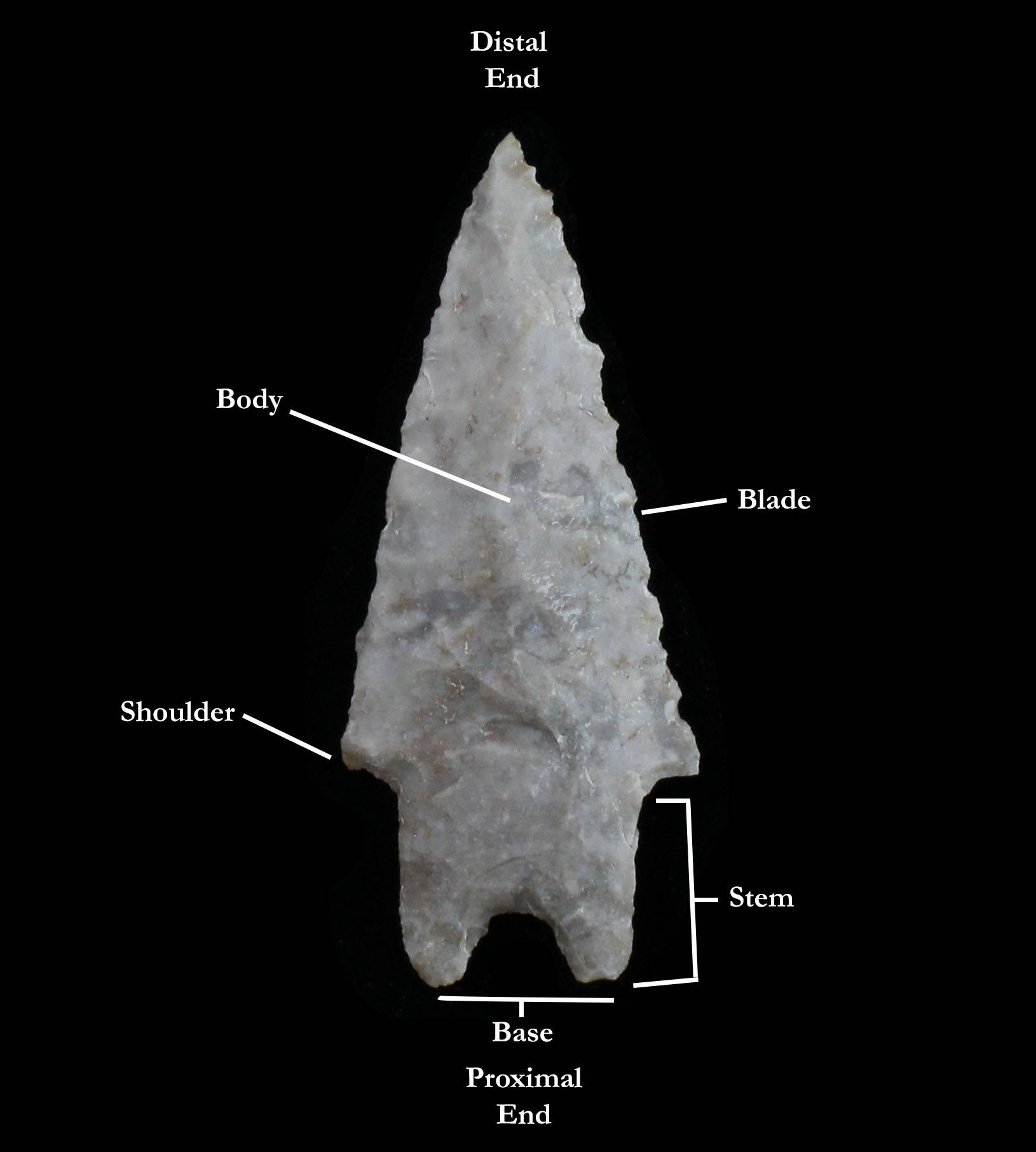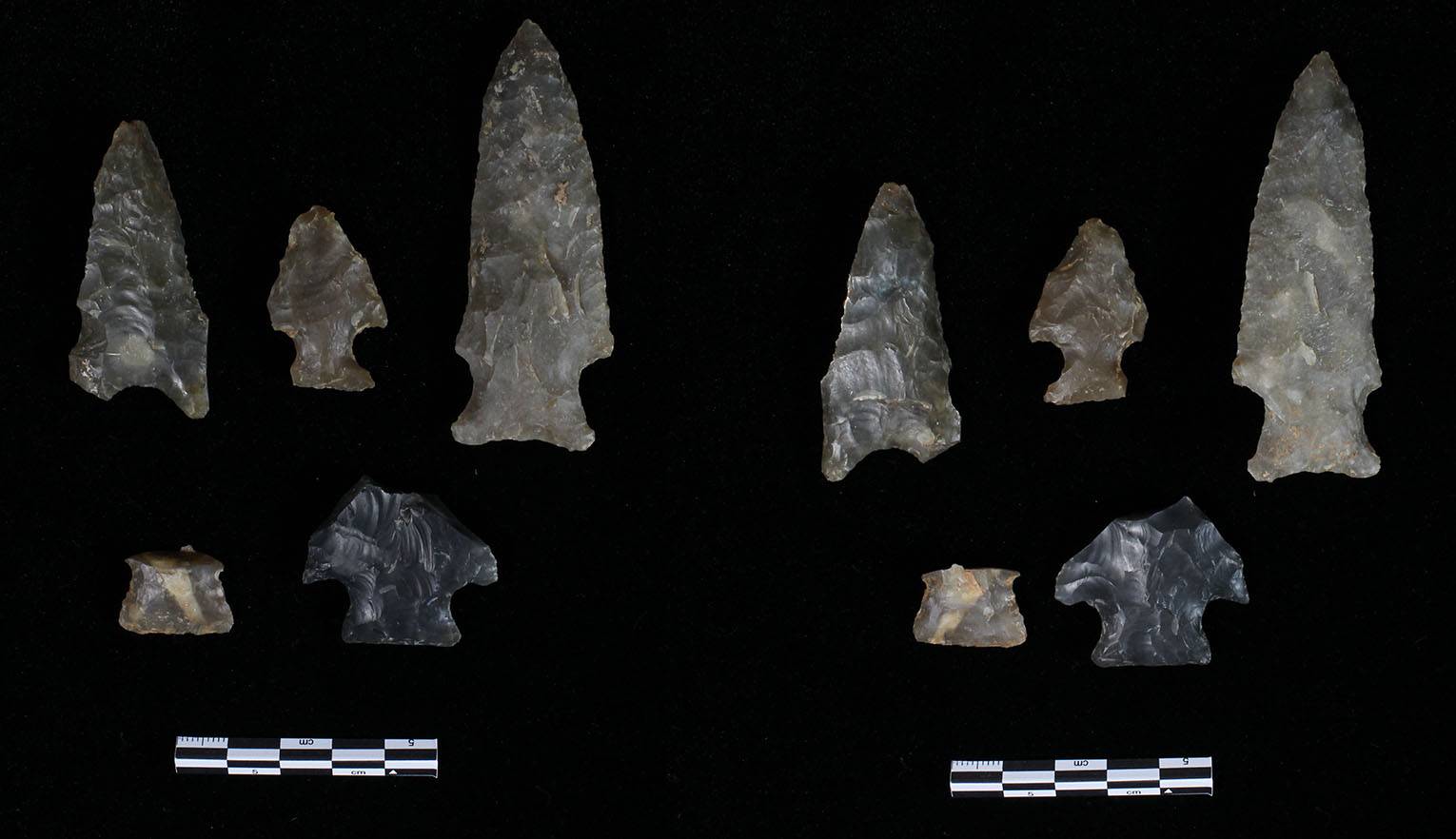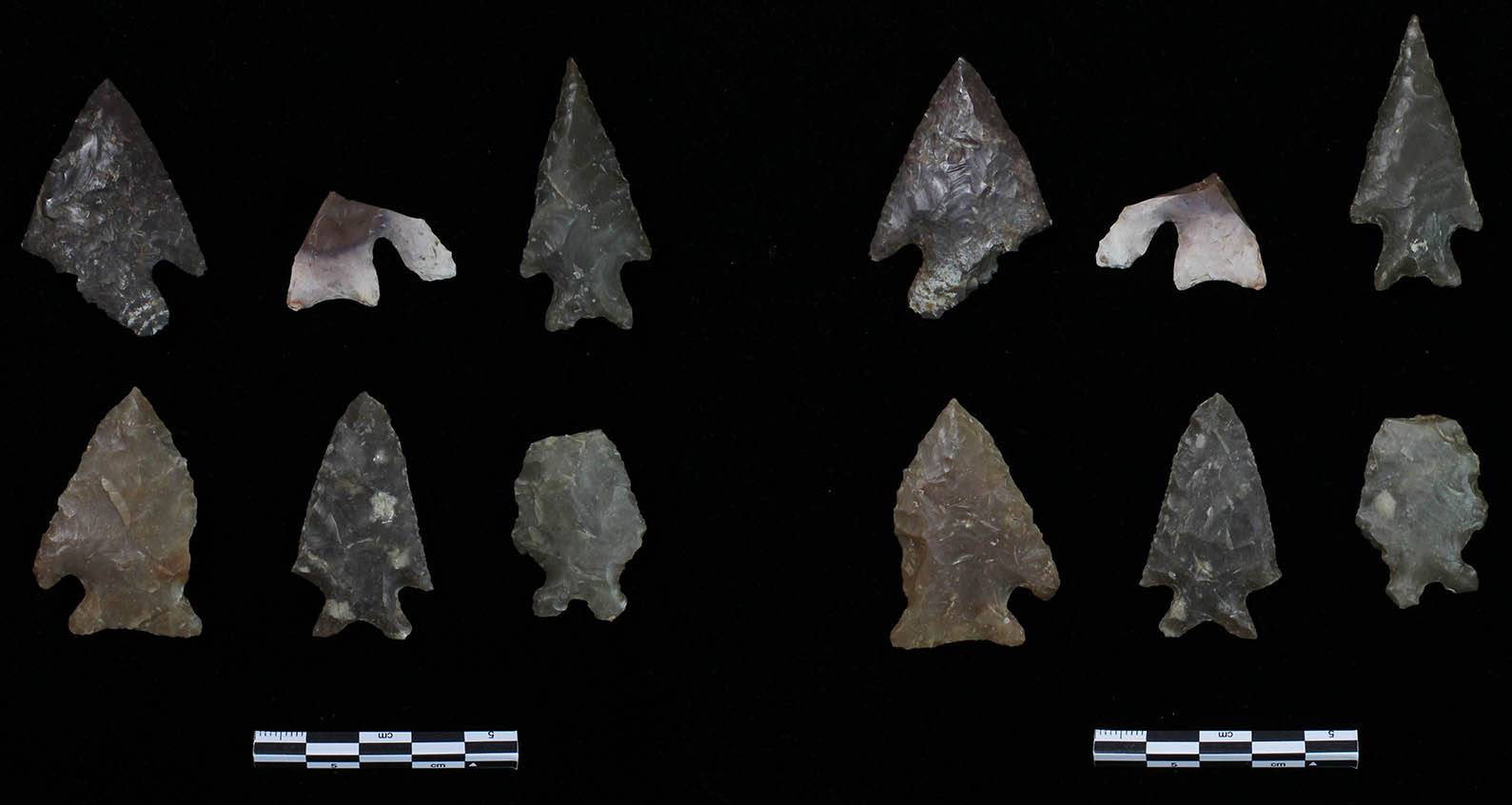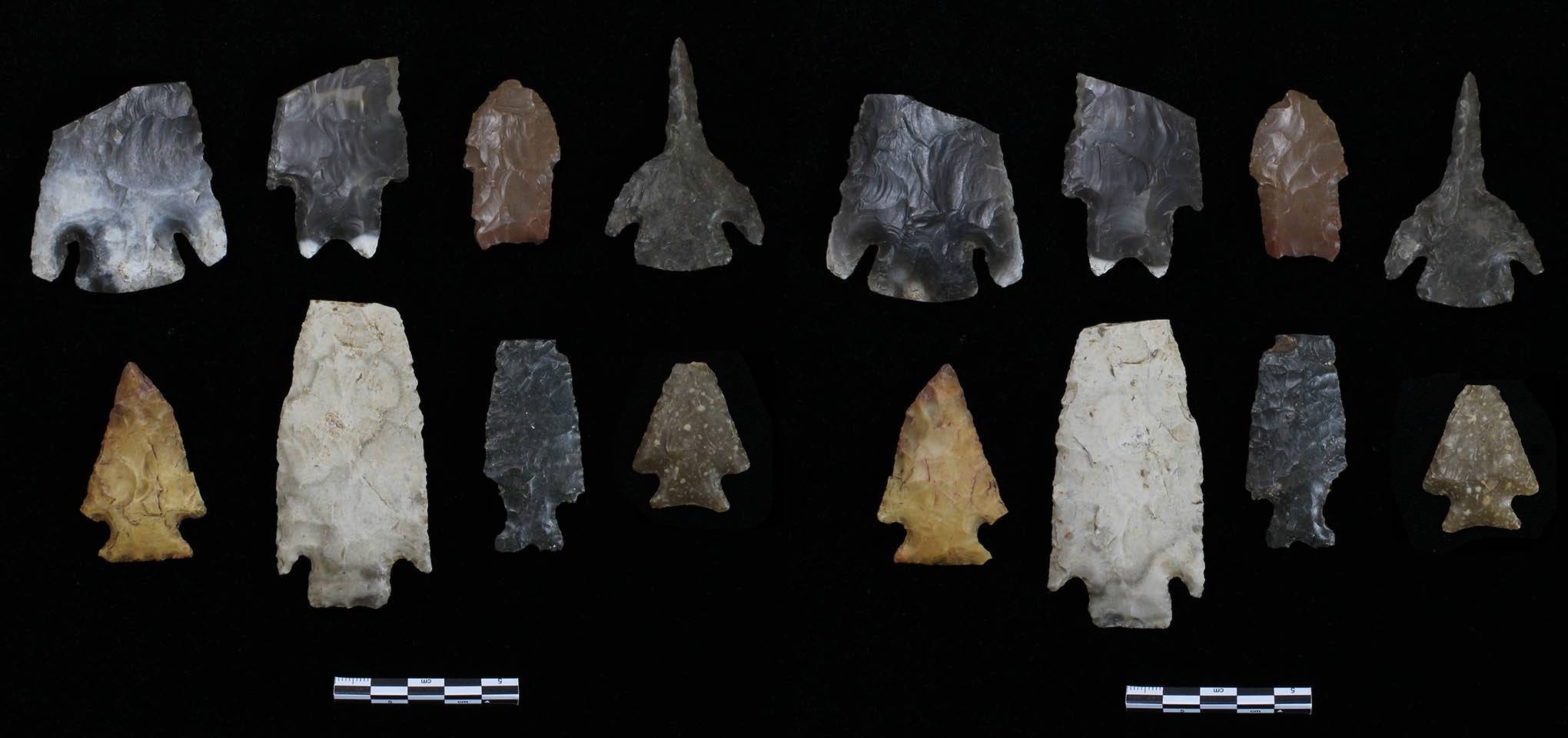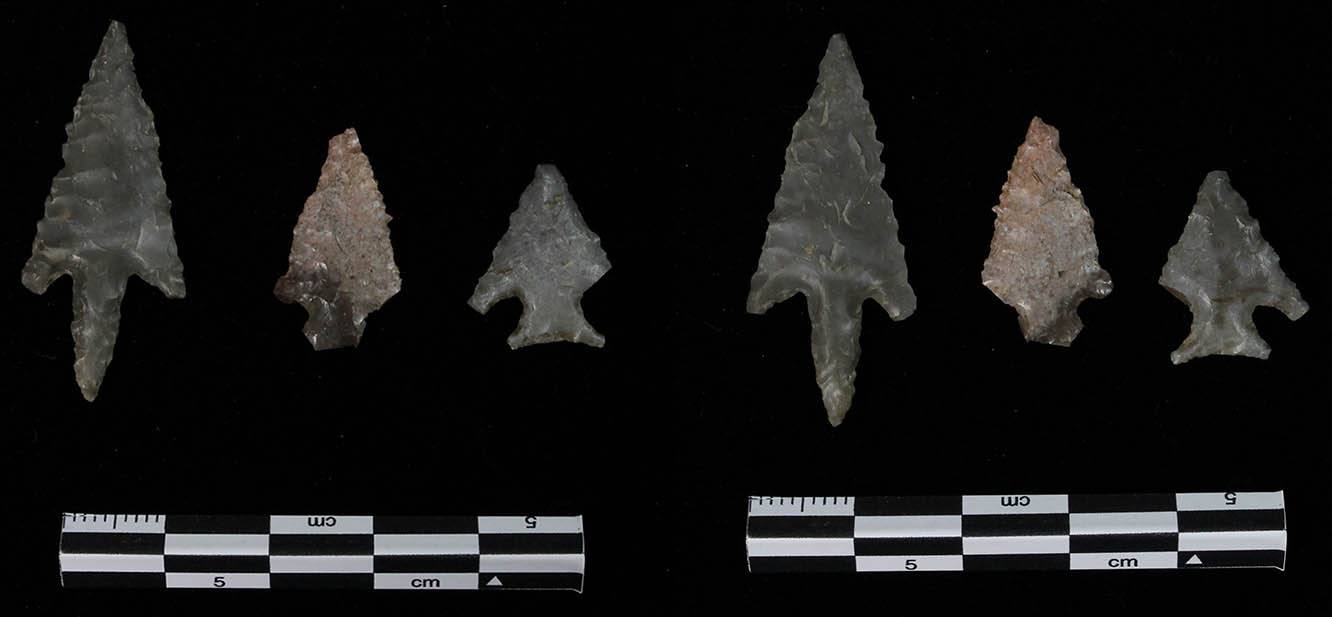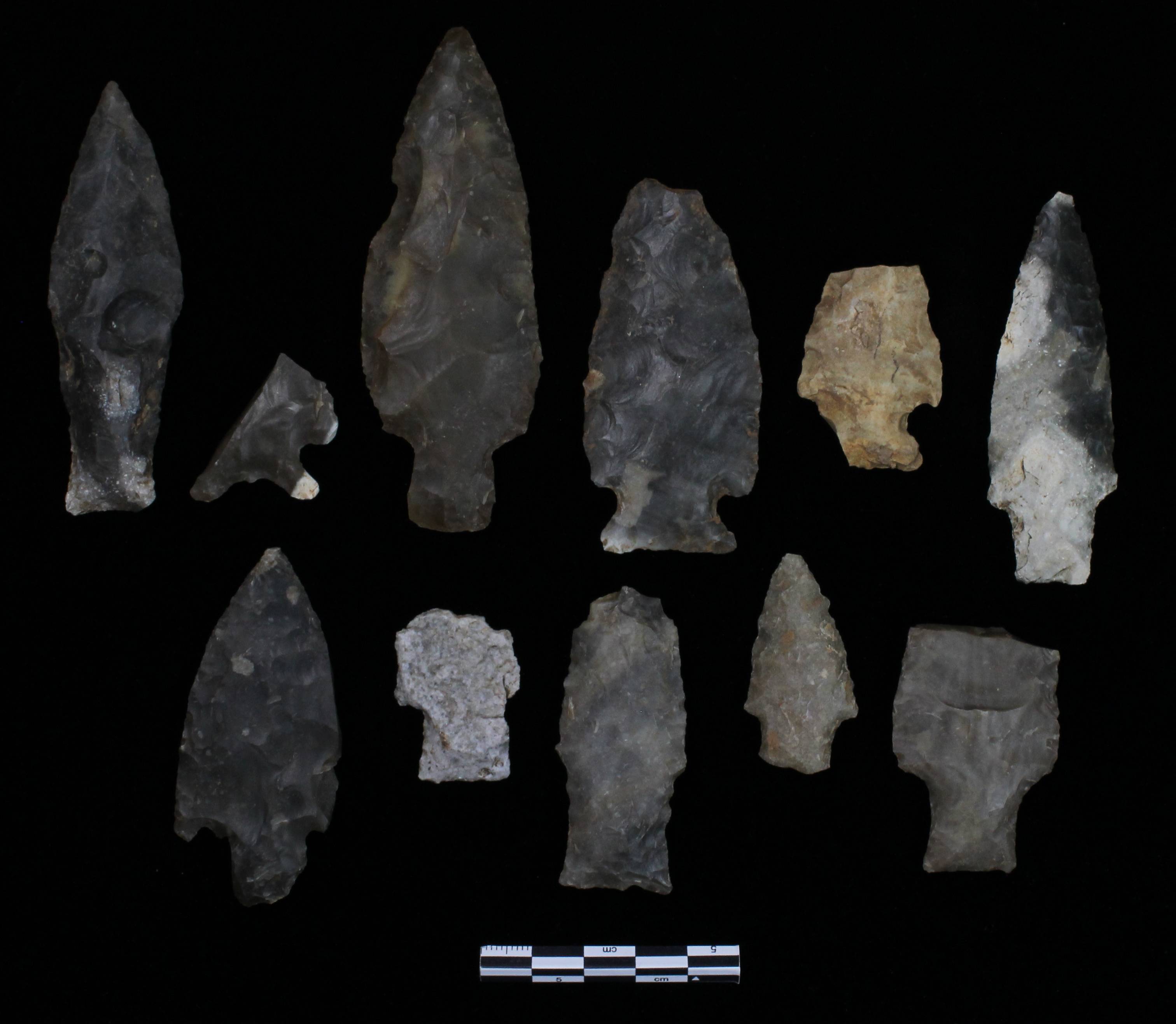Projectile Points
Archaeologists use the term projectile point to indicate artifacts, usually made of stone, which were intended to be shaped and hafted to a wooden or cane shaft and thrown at a target. There are two classes of projectile points found at Spring Late: dart points and arrow points. The difference between these two classes relates to the type of projectile technology used. For instance, arrow points were used during the Late Prehistoric time period in association with bow and arrow technology, while dart points were larger points hafted to a longer spear (or dart) shaft that was thrown either by hand or by using an atlatl. Dart points, which make up the majority of the Spring Lake projectile point collection, were used by indigenous Texans from the earliest time period- the Paleoindian period (around 11,500 years ago.) Darts points were used for hunting large game animals like bison or large deer and antelope. Around 1200-1300 years ago, during a time period defined as the Late Prehistoric, darts and atlatls were replaced by smaller, lighter bows and arrows. Arrow points were much smaller than dart points, usually no larger than a US nickel (21.21 mm.)
Typed projectile points are considered to be temporally diagnostic of particular time periods during which they were made and used. An artifact is considered to be temporally diagnostic when many examples have been tied to a time period through their proximity to other artifacts and features, such as charcoal, animal bone, or cooking features, which can be absolutely dated using radiocarbon dating or other methods.
In all, twenty six different temporally diagnostic projectile point types were found during our 2014 excavations at Spring Lake, including: Wilson and Dalton of the Paleoindian (n=6); Gower, Uvalde, Bandy, Merrell, and Martindale of the Early Archaic (n= 13); Bell (Calf Creek) and Andice from the Calf Creek component (n=6); Baird (aka Taylor or Early Triangular), Nolan, Travis, Desmuke and Pandale from the Middle Archaic (n=25); Bulverde, Castroville, Ellis, Edgewood, Ensor, Fairland, Marcos, Montell, Morhiss, Pedernales, Lange, Marshall and Darl of the Late Archaic (n=59); Scallorn and Perdiz arrow points of the Late Prehistoric.
Take a look through the different time periods to see the projectile points we found.

